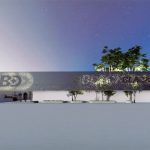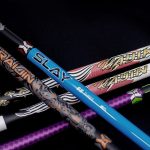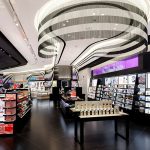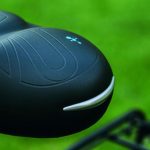Amer Sports net sales for the quarter ended Dec. 31 reached €583.4 million ($483 mm), up 21% compared to the same quarter a year earlier. Net sales increased by 14% in local currencies, particularly due to sales growth in Winter Sports Equipment, Footwear and Apparel. In local currencies, EMEA increased by 21%, the Americas by 8% and Asia Pacific by 3%. The company said spring/summer pre-orders indicate continued growth in sales and EBIT in 2011 but that rising labor and input costs would challenge margins.
Group EBIT excluding non-recurring items was €56.0 million ($44 mm). Increased sales volumes contributed €29.4 million to the EBIT growth. Gross margin was at previous year's level mainly due to year-end inventory clean-up with lower margins.
Operating expenses increased by €18.3 million. Strategy execution was accelerated in October-December with an additional €4 million being spent on long-term improvement projects, mainly in marketing and own retail. The Group also invested in the new business structure and key recruitments, particularly in category-based operations in footwear and apparel and in business to consumer.
Including non-recurring items, EBIT was €48.4 million ($39 mm). Non-recurring items were mainly related to capital gains, restructuring and write-downs.
Net financial expenses totaled €5.7 million ($7 mm) including net interest expenses of €5.6 million ($5 mm) and unrealized net foreign exchange gains totaling €3.4 million ($3 mm). Earnings before taxes totaled €42.7 million ($32 mm). Earnings per share were €0.30.
FINANCIAL RESULTS 2010
In 2010, consumer confidence improved due to stronger global economic conditions and the sporting goods market began to recover after a couple of years of a declining trend. However, there were significant regional and sports area differences. Strong development in the winter sports equipment market was driven by good snow conditions.
A total of €57.4 million ($52 mm) was invested in research and development in 2010, accounting for 8.8% of all operating expenses (2009: €52.0 million, 9.0% of operating expenses; 2008: €55.6 million, 9.6% of operating expenses). Winter and Outdoor's share of the R&D expenditure was 63%, while Ball Sports accounted for 14%, and Fitness for 23%.
On December 31, 2010, 514 persons were employed in the company's research and development activities, approximately 8% of the total number of people employed by Amer Sports.
Human Resources
On December 31, 2010, the number of Group employees was 6,597 (December 31, 2009: 6,331; December 31, 2008: 6,338). The increase was mainly manufacturing personnel in Winter Sports Equipment and personnel working in own retail. The average number of personnel in 2010 was 6,497 (2009: 6,362; 2008: 6,285). At the end of 2010, men represented 62% (2009: 62%; 2008: 58%) of Amer Sports employees and women 38% (2009: 38%; 2008: 42%).
Salaries and wages paid in 2010 totaled €336.4 million (2009: €301.5; 2008: €294.7). The Amer Sports' reward system is based on performance focusing on team and individual accountability.
BUSINESS SEGMENT REVIEWS
Winter and Outdoor
In 2010, Winter and Outdoor's net sales totaled €1.02 billion ($863 mm), an increase of 12% in local currencies. Net sales growth was driven by Winter Sports Equipment and Footwear. Geographically, the strongest growth was in EMEA.
In October-December, Winter and Outdoor's net sales totaled €416.5 million ($329 mm), an increase of 21% in local currencies. Growth was driven by Winter Sports Equipment, Footwear and Apparel.
In 2010, EBIT excluding non-recurring items more than doubled and was €96.9 million ($47 mm). Increased sales volumes contributed €46.3 million to the EBIT growth while higher gross margins contributed €29.5 million. Operating expenses increased by €33.8 million (all in local currencies). Operating expenses as a percentage of net sales were at previous year's level.
In October-December, EBIT excluding non-recurring items increased by 44% to €61.2 million ($43 mm). Increased sales volumes contributed €29.1 million and higher gross margins €4.9 million to the EBIT growth. Operating expenses increased by €18.3 million mainly driven by increased sales, distribution and marketing expenses (all in local currencies).
In 2010, Winter Sports Equipment net sales totaled €438.4 million ($372 mm) and were up by 12% in local currencies. The biggest product categories were alpine ski equipment, representing 75% of net sales, cross country 15%, and snowboards 10%. Net sales of alpine ski equipment increased in local currencies by 9%, cross country ski equipment increased by 41% and snowboards by 4%. In 2010, 70% of the Winter Sports Equipment business area's net sales were derived from EMEA, 18% from the Americas, and 12% from Asia Pacific.
During the year, a major operational efficiency program was started at Winter Sports Equipment.
In October-December, Winter Sports Equipment net sales were €252.8 million ($204 mm) with an increase of 19% in local currencies. All categories and regions were contributing to the improvement.
Footwear
In 2010, Footwear net sales totaled €219.6 million ($169 mm) and were up by 26% in local currencies. The growth came from all product categories. EMEA continued to be the largest region representing 83% of global sales, followed by the Americas with 14%, and Asia Pacific with 3%. The demand was particularly strong in Germany and Austria.
In October-December, Footwear net sales totaled €47.3 million ($28 mm) and were up by 71% in local currencies. The fall/winter deliveries and re-orders were said to be “very strong.”
Apparel
In 2010, Apparel net sales totaled €156.6 million (135.7) and were up by 6% in local currencies. EMEA was 52% of global sales, Americas 37%, and Asia Pacific 11%.
In October-December, Apparel net sales totaled €63.0 million (47.0) and were up by 25% in local currencies. The fall/winter deliveries and re-orders were very strong in every region for all brands and products.
Cycling
In 2010, Cycling net sales totaled €106.4 million ($100 mm) and were up by 5% in local currencies. Rims and wheels represented 82% of net sales, and cycling apparel and footwear 15%. Net sales of rims and wheels increased in local currencies by 4%, and cycling apparel and footwear by 14%. The distribution of Cycling net sales by geographical region was as follows: EMEA 65%, Asia Pacific 19%, and the Americas 16%. The strongest growth was in the U.K. and in the USA.
In October-December, Cycling net sales totaled €26.8 million (27.1) and were down by 3% in local currencies. In the Americas, net sales increased by 16%. Sales to bike manufacturers (OEM) decreased.
Sports Instruments
In 2010, Sports Instruments net sales totaled €94.0 million ($86 mm) and were up by 4% in local currencies. The biggest product categories were outdoor products, representing 41% of net sales, diving instruments 20% and training 20%. Outdoor products sales continued to grow and increased by 14%. In diving and training instruments, sales were at previous year's level. The distribution of net sales by geographical region was as follows: EMEA 49%, Asia Pacific 20% and the Americas 31%.
In October-December, Sports Instruments net sales totaled €26.6 million (24.6) and were up by 2% in local currencies. Outdoor products sales continued to grow.
BALL SPORTS
In 2010, Ball Sports' net sales totaled €520.6 million ($477 mm), an increase of 3% in local currencies. Growth in Team Sports and Golf was offset by slightly declining sales of low/mid price point rackets in Racquet Sports. Sales increased in the Americas by 6%, were stable in EMEA and declined by 3% in Asia Pacific mainly due to the soft tennis market in Japan.
In October-December, Ball Sports' net sales totaled €107.3 million ($95 mm), an increase of 4% in local currencies.
In 2010, EBIT excluding non-recurring items was €32.2 million ($24 mm), an increase of 37%. Higher gross margins contributed €8.8 million to the EBIT growth and increased sales volumes contributed €6.9 million. The improvement in the gross margin is the outcome of a better sales mix. Operating expenses increased by €5.3 million. Operating expenses as a percentage of net sales were at previous year's level.
In October-December, EBIT excluding non-recurring items was -€2.7 million (-$2 mm). The fourth quarter results in 2009 included a positive amount of €3.5 million due to an exceptional revaluation of pension liabilities. Increased sales volumes contributed €1.7 million to the EBIT development and lower gross margins contributed -€1.7 million. Operating expenses increased by €2.6 million mainly driven by accelerated spending in marketing (all in local currencies).
Racquet Sports
Racquet Sports net sales in 2010 totaled €232.5 million ($223 mm) and were at previous year's level in local currencies. In local currencies, the Americas and EMEA were at previous year's level and Asia Pacific was down by 6%. The decline in Asia Pacific was due to the soft tennis market in Japan. The Americas accounted for 43% of net sales, EMEA for 35% and Asia Pacific for 22%.
The biggest product categories were tennis rackets, representing 41% of net sales, and tennis balls 22%. Net sales of tennis rackets and tennis balls were at previous year'















